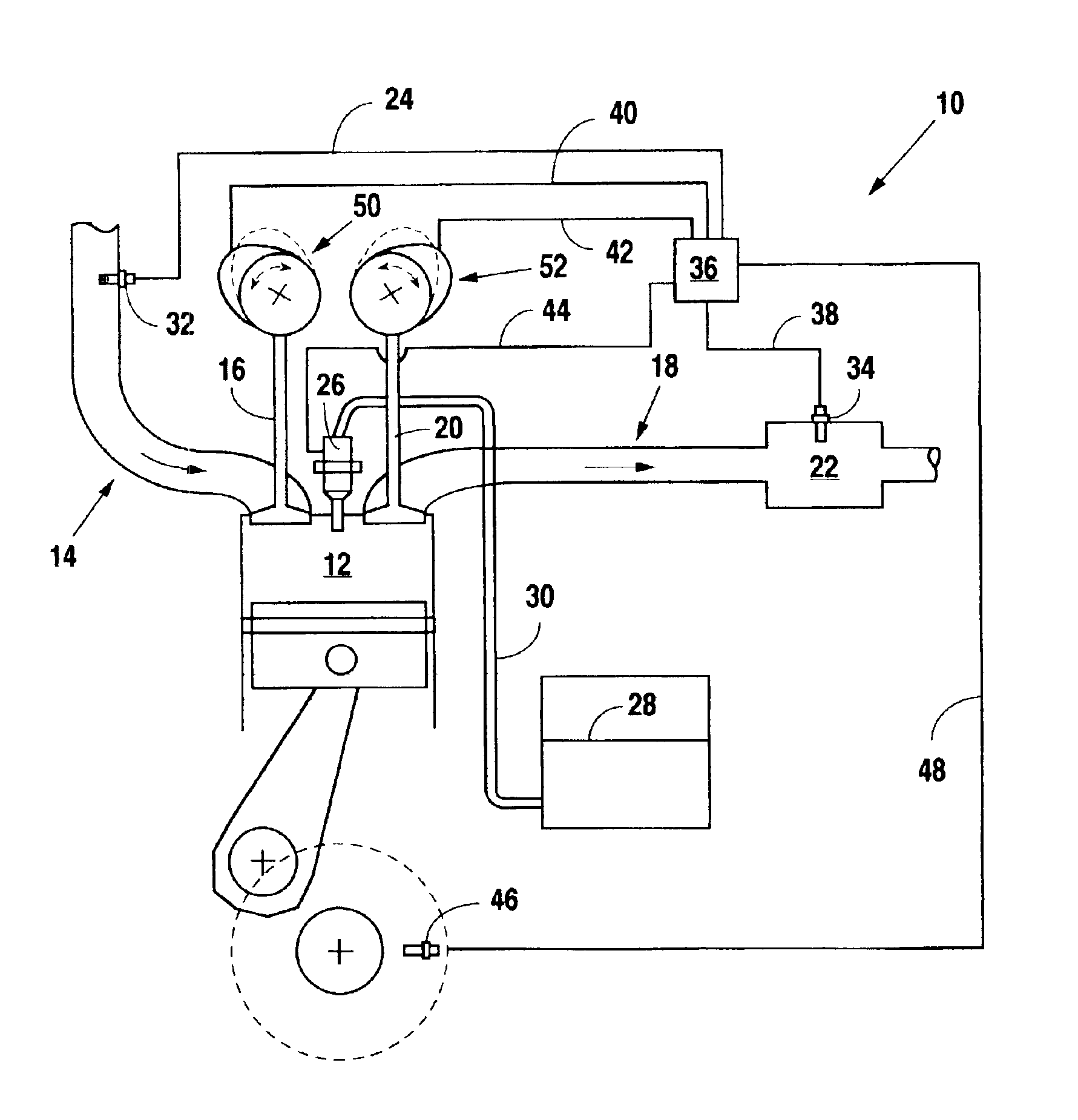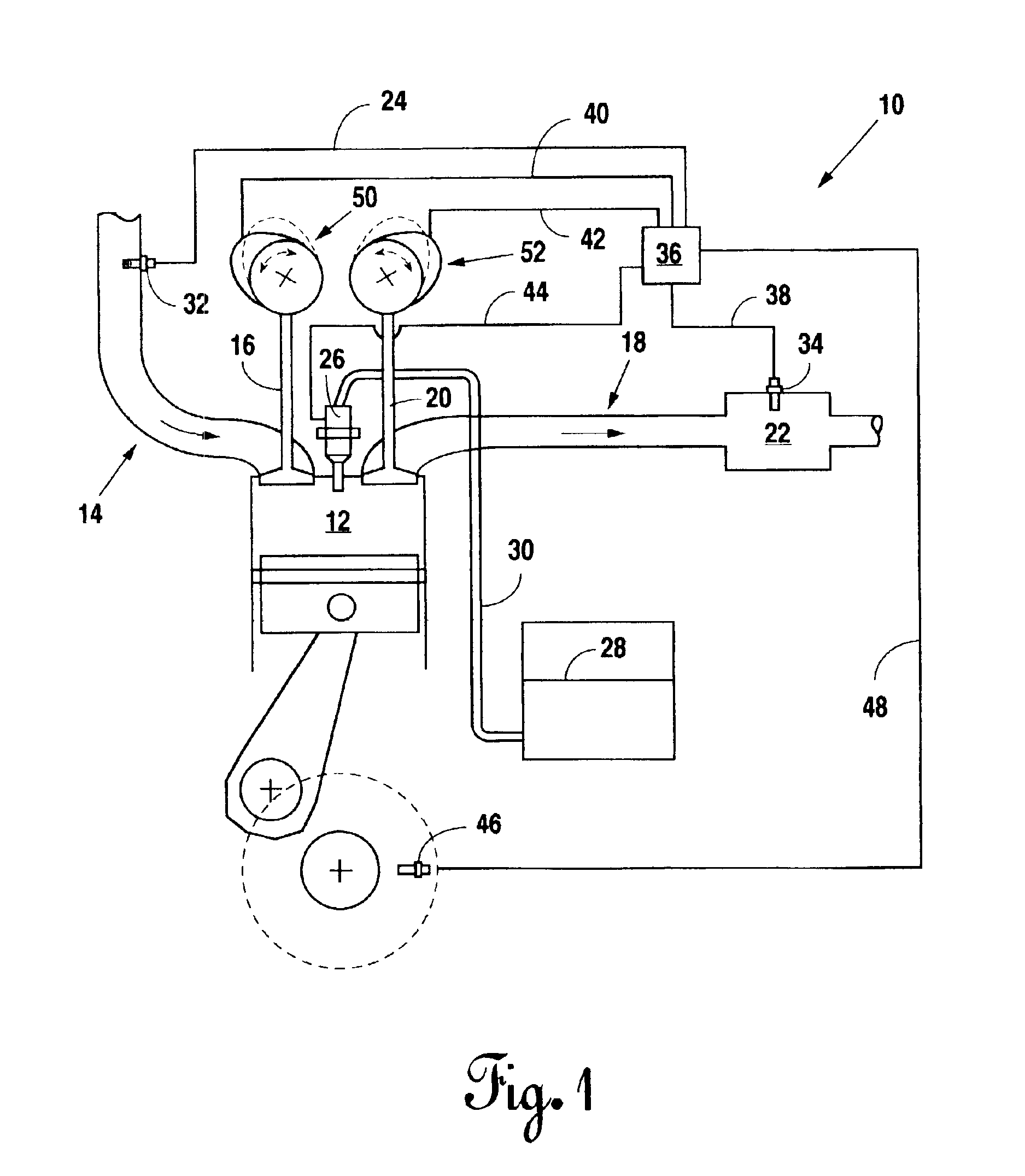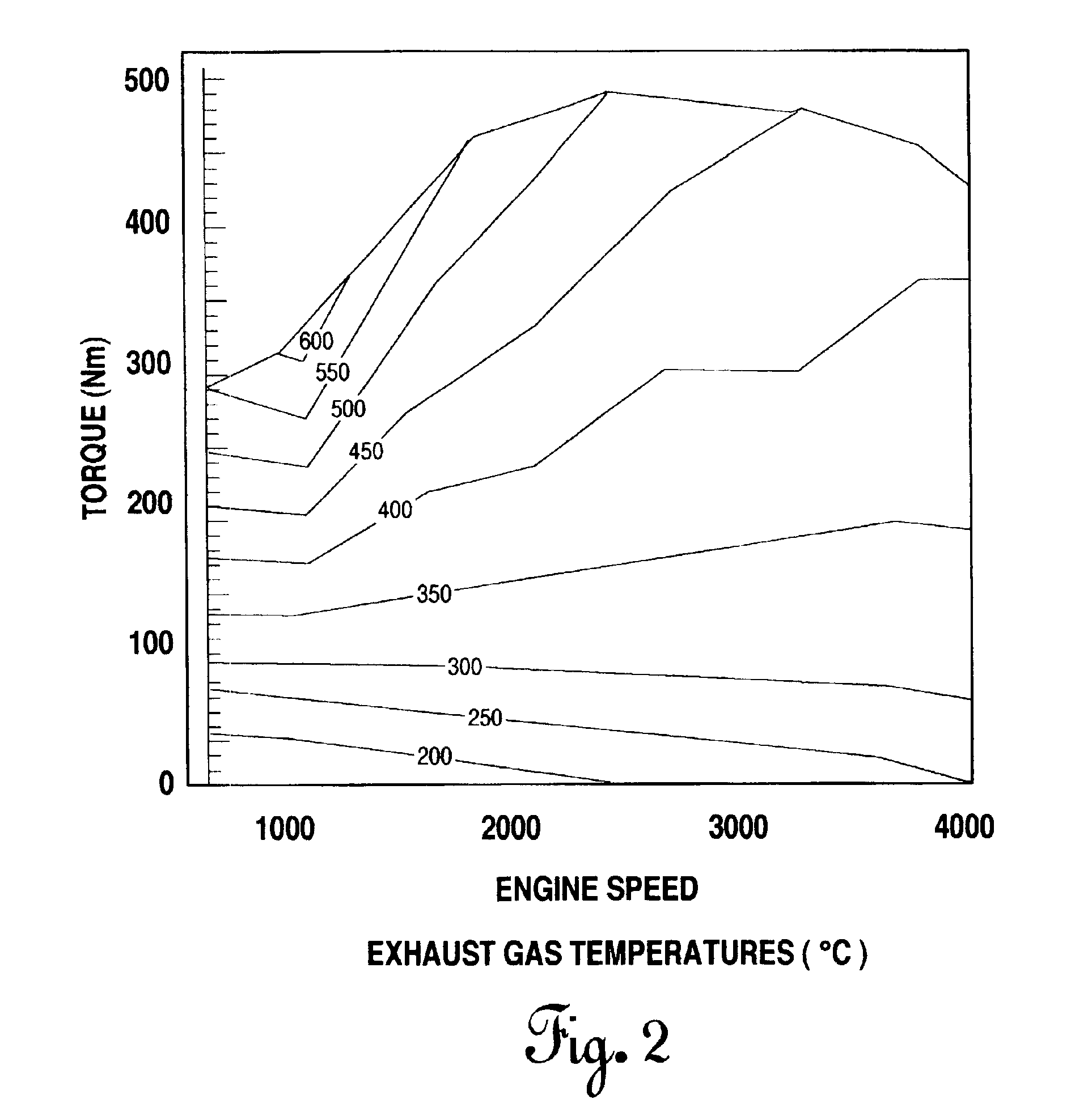Use of a variable valve actuation system to control the exhaust gas temperature and space velocity of aftertreatment system feedgas
- Summary
- Abstract
- Description
- Claims
- Application Information
AI Technical Summary
Benefits of technology
Problems solved by technology
Method used
Image
Examples
Embodiment Construction
[0017]A diesel engine 10, also known as a compression-ignition engine, suitable for use in carrying out exhaust gas temperature and space velocity control in accordance with the method embodying the present invention, is illustrated schematically in FIG. 1. The diesel engine 10 has a combustion chamber 12, an intake air system 14 in controlled fluid communication with the combustion chamber 12 by way of an intake valve 16, and an exhaust gas system 18 in controlled fluid communication with the combustion chamber 12 by way of an exhaust valve 20. An exhaust gas aftertreatment device 22, for example a lean NOx trap (LNT), is disposed in the exhaust gas system 18 at a position downstream of the exhaust valve 20.
[0018]Operation of the intake valve 16 and the exhaust valve 20 is respectively individually varied by any one of several well known variable valve actuation (VVA) systems 50,52. Fuel is injected into the combustion chamber 12 by a fuel injector 26 in fluid communication with a ...
PUM
 Login to View More
Login to View More Abstract
Description
Claims
Application Information
 Login to View More
Login to View More - R&D
- Intellectual Property
- Life Sciences
- Materials
- Tech Scout
- Unparalleled Data Quality
- Higher Quality Content
- 60% Fewer Hallucinations
Browse by: Latest US Patents, China's latest patents, Technical Efficacy Thesaurus, Application Domain, Technology Topic, Popular Technical Reports.
© 2025 PatSnap. All rights reserved.Legal|Privacy policy|Modern Slavery Act Transparency Statement|Sitemap|About US| Contact US: help@patsnap.com



